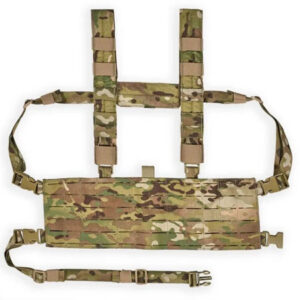Are Chest Rigs Suitable for All Body Types?
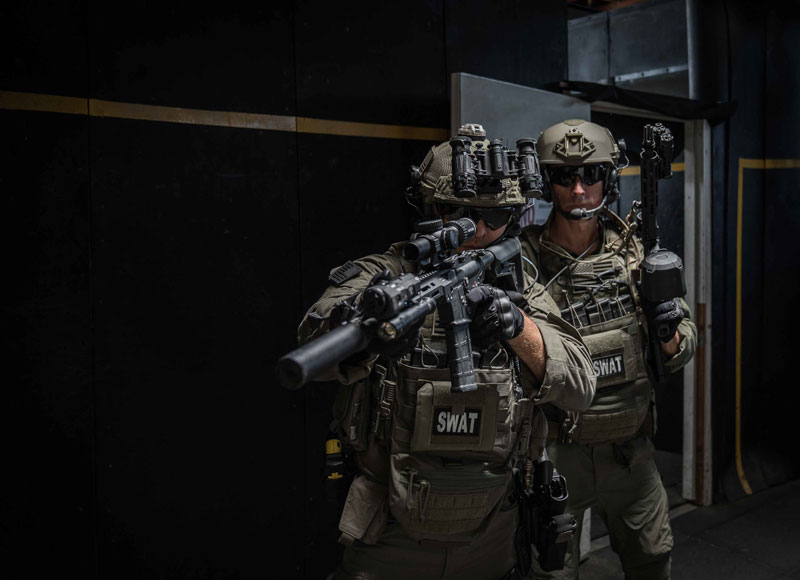
Chest rigs have become increasingly popular across various industries and communities—from tactical operators and survivalists to photographers, airsoft players, hikers, and even fashion-forward streetwear enthusiasts. Their utility and hands-free design make them a go-to option for carrying essential gear.
However, a common concern for first-time users is whether chest rigs are comfortable and functional for all body types. The answer isn’t a simple yes or no—because it depends on several factors, including design, adjustability, and how well the rig is fitted.
This comprehensive guide examines how chest rigs accommodate various body types, the importance of making proper adjustments, and what to consider when selecting the ideal chest rig for your build.
Gear up with the Chase Tactical MCR1, a laser-cut MOLLE chest rig built for mission-ready modularity.
What Is a Chest Rig?
A chest rig is a load-bearing gear worn over the chest and secured with a strap harness. It typically consists of a central gear panel and various pouches, allowing users to keep important equipment within arm’s reach.
Depending on its intended use, a chest rig may be minimalistic, with just a few compartments, or heavily outfitted with multiple rows of MOLLE webbing.
Key Components of a Chest Rig
At a minimum, a chest rig includes:
- Shoulder straps – to hold the gear panel securely across the chest
- Waist/back strap or harness – to stabilize the panel and reduce bouncing
- Modular pouches – for holding gear based on your activity (ammo, tools, first aid)
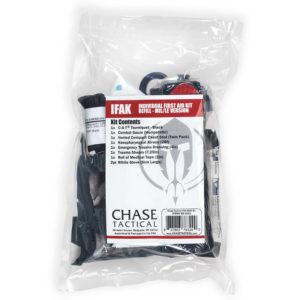
The way these components are designed and connected directly affects how the rig fits on different bodies.
Common Concerns Around Fit
One-size-fits-all rarely applies perfectly to body gear. Many worry whether a chest rig will fit well if they’re too tall, short, slim, broad, or curvy.
Fortunately, modern chest rigs have made significant advancements in addressing these concerns.
Do Chest Rigs Fit Bigger Bodies?
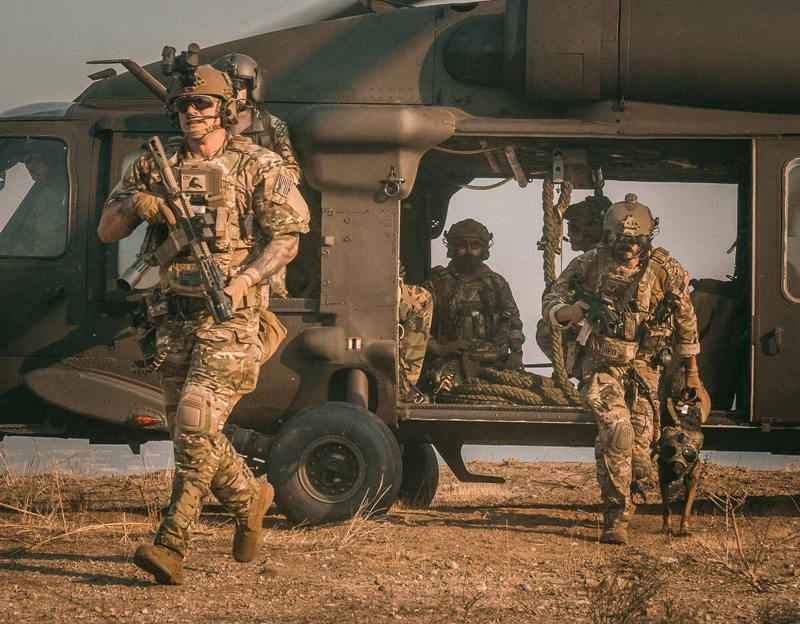
Yes, many chest rigs are built to accommodate larger torsos. However, it’s essential to choose models with extended or generously adjustable straps. Some standard rigs may have limitations on maximum strap length, which can result in a tight or awkward fit for plus-sized users.
Look for brands that mention “big and tall” compatibility or offer longer harness extensions. Chest rigs featuring breathable mesh and wider panels provide improved comfort and support for individuals with larger frames.
Are They Comfortable for Slim or Petite Users?
Slim and petite users often face the opposite challenge: finding a rig that doesn’t shift or hang awkwardly due to excess strap length or wide panels.
Low-profile rigs with narrow shoulder straps and lighter builds are ideal. Look for compact panels and rigs that offer high strap cinchability. A chest rig that stays snug and sits high on the chest will provide much better control and reduce fatigue for smaller individuals.
What About Women’s Chest Rig Fit?
For women, particularly those with larger busts, traditional chest rigs can sometimes feel restrictive or poorly positioned. However, many modern brands now design chest rigs with gender-inclusive features, including:
- Adjustable strap placement to avoid pressure across the bust
- Cross-back harnesses that distribute weight more comfortably
- Curved shoulder straps for a natural fit on smaller or contoured shoulders
Some women also prefer modular chest rigs that allow them to shift the gear panel slightly off-center, which improves comfort during extended use.
Key Features That Affect Chest Rigs’ Fit and Comfort
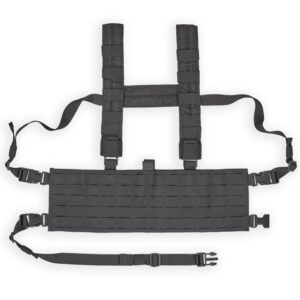
When evaluating how a chest rig will fit your body, consider more than strap length. The overall design, including adjustments to strap length and modularity, contributes to comfort, arguably the most crucial element in achieving a proper fit. High-quality rigs allow you to adjust for size, load balance, and comfort.
Check for:
- Long enough shoulder straps to accommodate tall or large users
- Waist straps with adequate range to tighten snugly on slim frames or expand for layers
- Quick-adjust buckles or Velcro for on-the-fly modifications during active use
Good adjustability ensures your rig doesn’t slide, bounce, or pinch—even during intense activity.
Harness Style
Harness design plays a key role in how the rig feels during movement. There are two main styles:
- H-Harness: This harness offers comfort and simplicity, ideal for even weight distribution across the back. It is ideal for individuals with broader bodies and those who prefer stability over flexibility.
- X-Harness: Provides a tighter, more body-conforming fit. These work better for curvier or athletic bodies as the cross-pattern hugs the upper torso securely.
Depending on your preference, some rigs also have hybrid systems that allow you to switch between H and X harnesses.
Panel Size and Placement
The gear panel’s size and location can make a big difference, especially when worn for extended periods. A panel that’s too large for a smaller body can cause discomfort and hinder mobility. At the same time, a panel that’s too small for a larger user may lack sufficient support or storage capacity.
Ideally, the panel should rest just below your sternum—high enough for easy reach but low enough to avoid interfering with breathing or shoulder mobility. Many users prefer chest rigs that feature modular or removable panels, which offer better long-term versatility.
How to Adjust a Chest Rig for Your Body

Getting a chest rig to fit comfortably involves more than just putting it on. A well-fitted rig enhances performance, reduces fatigue, and prevents injury.
Step 1: Start with the Shoulders
Slip the rig on like a vest and begin by adjusting the shoulder straps. The goal is for the gear panel to rest comfortably high on your chest, between your nipples and collarbone, without digging in.
This high position allows for greater movement and helps prevent abdominal pressure during squats or kneeling.
Step 2: Adjust the Waist or Back Straps
Tighten the waist strap until the rig fits snugly against your torso without restricting your breathing. The panel should remain flush with your body and not bounce during movement.
If your rig includes a rear or back strap, ensure it’s adjusted to keep the shoulder harness in place and evenly distribute the weight.
Step 3: Fine-Tune for Activity
After walking or moving around for a few minutes, revisit your adjustments. Realign any shifting straps and ensure there are no pressure points. When carrying a heavier load, distribute the weight evenly across both shoulders and avoid over-tightening one side.
Choosing the Right Rig Based on Body Type
Selecting the right chest rig involves understanding your body’s needs and choosing a model that accommodates them well. Here’s a more tailored look at ideal rig features for different body types.
For Broad or Muscular Builds
Opt for rigs with wide shoulder straps and a firm harness system. H-harness rigs often feel more natural on broad shoulders and offer greater load-carrying capacity. Padding helps reduce strain during extended use.
For Slim or Petite Frames
Compact, minimalist rigs with thin straps will better suit smaller frames. Choose a panel that doesn’t overwhelm your torso or restrict movement. Lightweight fabrics also help reduce fatigue.
For Curvy or Plus-Sized Individuals
Look for rigs with flexible strap routing, breathable back panels, and ample expansion capacity. X-harness designs can contour more comfortably and minimize strap slippage.
For Women
Modular rigs with repositionable straps and curved harness designs are more suitable for women. Some brands now offer women-specific tactical gear, but unisex rigs with high adjustability also work.
Final Thoughts
Chest rigs are highly functional and adaptable—but only when fitted properly. The right combination of panel size, strap length, harness style, and body awareness can make a chest rig suitable for just about anyone.
Whether carrying gear through rugged terrain, running drills, or just using it as a fashionable utility piece, comfort and fit should never be compromised. Always test, adjust, and customize your rig until it feels like a natural extension of your body.
Frequently Asked Questions
Can a chest rig be worn over bulky clothing or body armor?
Absolutely. Most modern rigs are designed with extended strap systems that accommodate winter layers or ballistic vests. Be sure to re-tighten after layering to avoid slippage.
Are there chest rigs made specifically for women?
Some brands now create women-specific or gender-neutral chest rigs with improved strap positioning, curved shoulder harnesses, and modular designs that provide a comfortable fit across various chest shapes.

